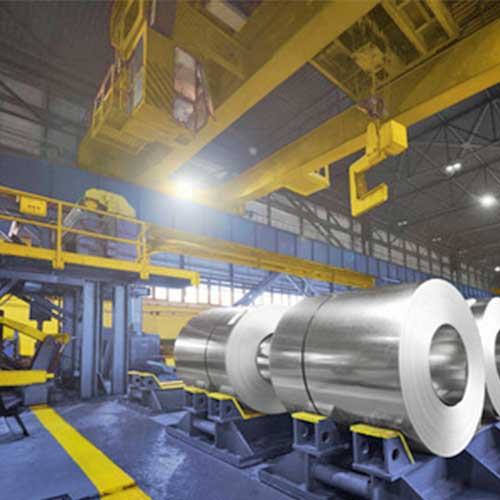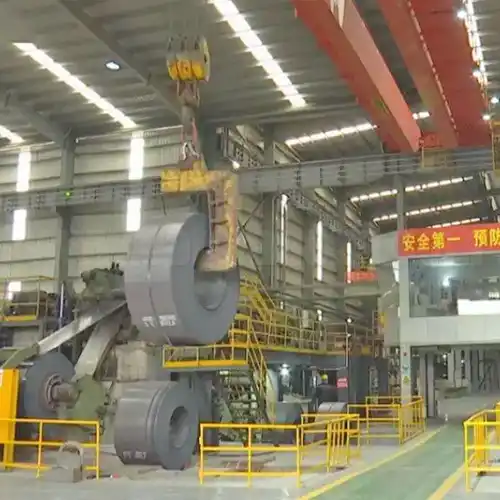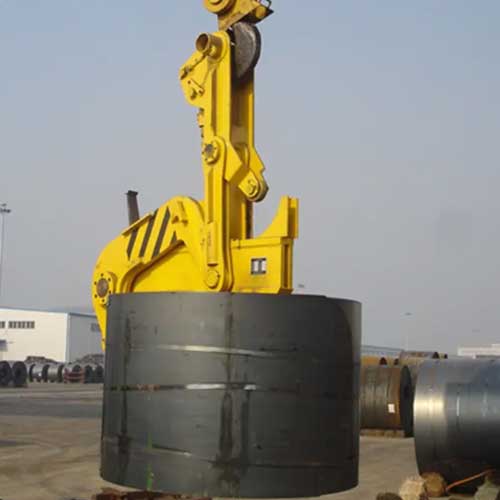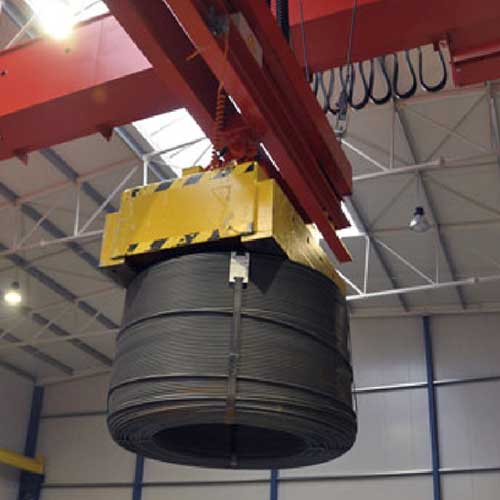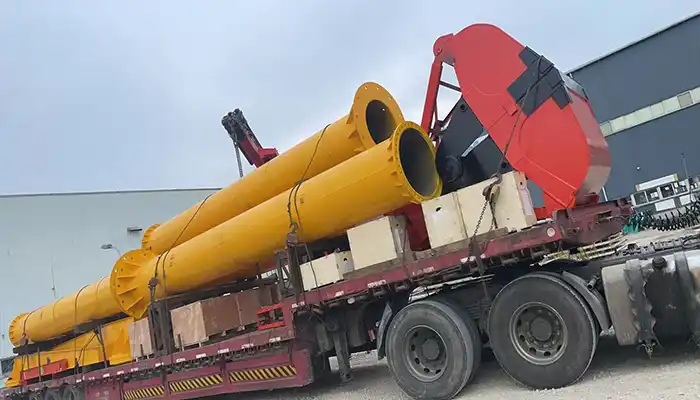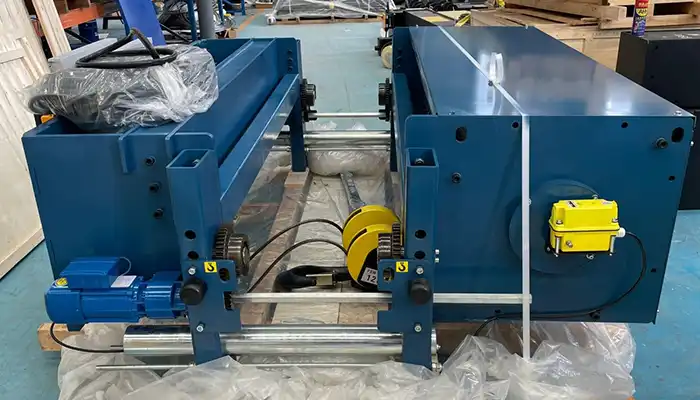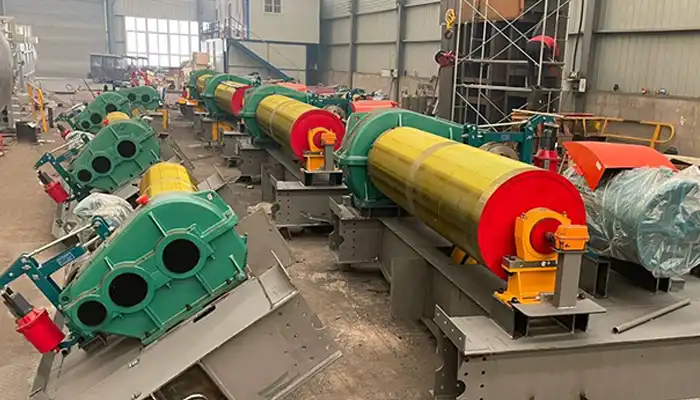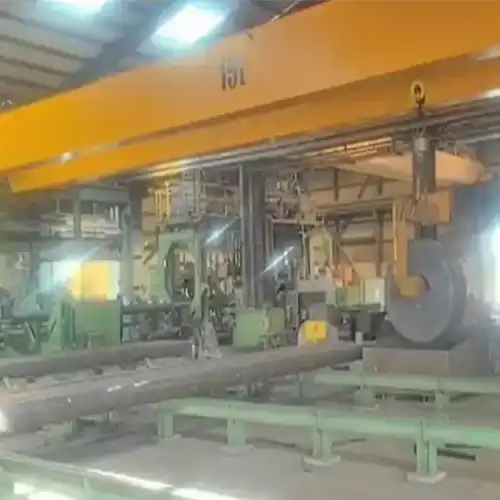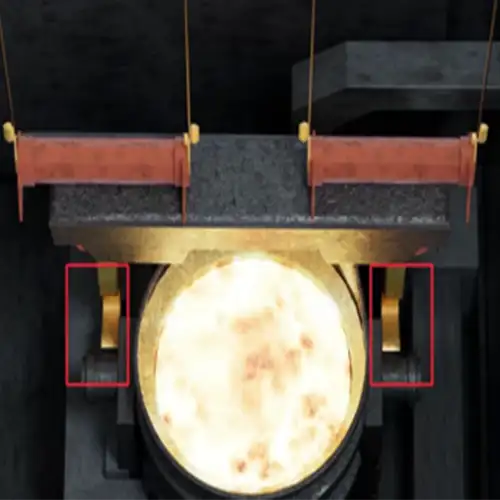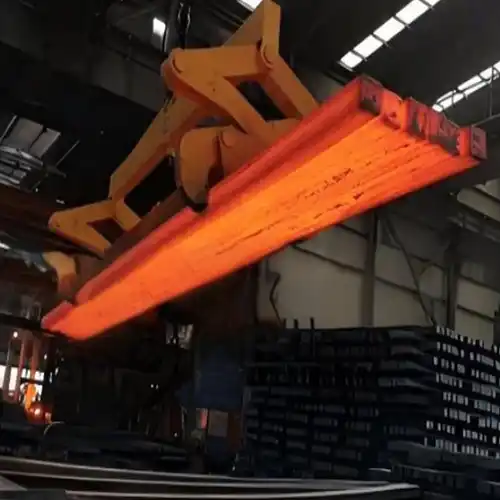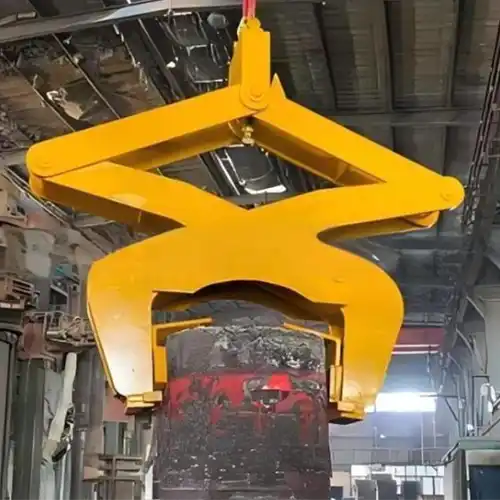Is the 15 Ton C Hook Crane Outdated for Coil Handling?
The 15 ton C-hook crane may be less efficient compared to newer, safer & more adaptable coil handling solutions.Get cost-effective coil handling solution!
Category: Featured
Your Trusted Steel Coil Handling Crane Manufacturer & Supplier
Is the 15 Ton C-Hook Crane Outdated for Coil Handling?
The 15 ton C-hook crane may be less efficient compared to newer, safer, and more adaptable coil handling solutions.
Introduction: Steel Coil Handling Cranes
The 15 ton C-hook crane has been a reliable workhorse in coil handling for years. Its simple design—using a hook to grip and lift coils—has made it a go-to solution in steel mills and other heavy industries.
But with the constant push for higher efficiency and better safety in industrial operations, it's natural to ask: Is the C-hook crane still the best choice? As new technology enters the market, many are starting to question if the traditional C-hook crane is becoming outdated.
Why Modernizing Lifting Equipment Matters
As industries continue to evolve, so do their needs. Here's why upgrading lifting equipment is becoming more crucial:
- Faster production: With increasing demand, companies need faster and more efficient ways to move materials.
- Improved safety: Older systems can sometimes put workers at risk, especially when relying on manual operations.
- Automation integration: As factories move toward automation, older equipment like the C-hook crane may struggle to integrate with new systems.
Upgrading lifting equipment isn't just about keeping up with trends—it's about staying competitive and meeting industry demands for safer, more efficient operations.
Purpose of This Article
This article aims to explore whether the 15 ton C-hook crane is still relevant for modern coil handling. We'll compare it with new alternatives, such as:
- Coil tongs
- Magnet lifters
- Automation systems
By looking at these alternatives for steel coil handling , we'll help you decide if it's time to replace your C-hook crane or if it still has a role in today's industrial world.
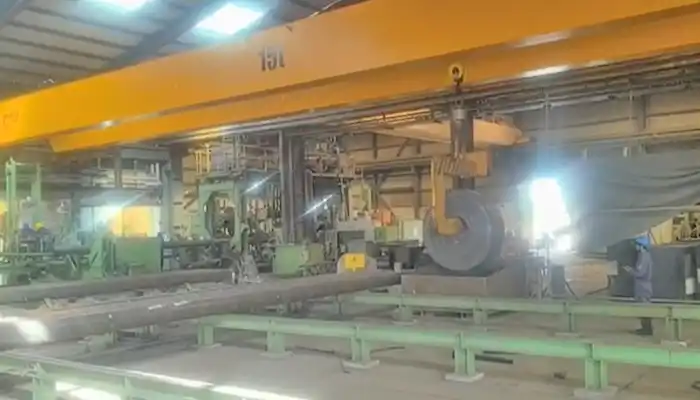
15-Ton C-Hook Crane
Overview of the 15-Ton C-Hook Crane's Functionality and Design
The 15 ton C-hook crane is designed to lift and move steel coils. Its hook is shaped like the letter "C," which allows it to slide through the hole in the center of the coil, lifting it securely. This crane can handle up to 15 tons, making it suitable for medium to heavy coil handling in steel mills and warehouses.
- Design: The C-hook is simple but effective. The coil is placed in the hook's open end, and the crane lifts it from the center hole.
- Functionality: It's an easy-to-use system. Operators simply position the hook over the coil, lift it, and move it to the desired location.
- Capacity: It handles up to 15 tons, perfect for most medium-sized coils commonly found in the steel industry.
Typical Applications in Coil Handling and Its Role in the Steel Industry
The C-hook crane plays a crucial role in handling steel coils, which are often bulky and heavy. It's widely used in steel mills, warehouses, and production lines.
- Coil Transportation: The crane moves coils between production stages, such as from the production line to storage or between different processing stations.
- Coil Storing: After coils are produced, they need to be stored in designated racks or areas. The C-hook crane makes this process faster and more organized.
- Unloading Materials: Steel coils are often delivered by trucks or shipping containers. The C-hook crane is used to unload these coils efficiently, getting them ready for further processing.
Without the C-hook crane, handling these heavy materials would be far more labor-intensive and time-consuming.
Advantages of the C-Hook Crane in Traditional Operations
The 15 ton C-hook crane offers several advantages, which is why it has remained popular in the steel industry for so long:
- Cost-Effective: The C-hook crane is relatively inexpensive to purchase and maintain compared to more complex lifting systems.
- Simplicity: The design is simple and straightforward. This makes it easy to operate, and operators can quickly learn how to use it.
- Reliability: The crane's proven design has made it a reliable tool for handling coils. When maintained properly, it can operate for many years without major issues.
These qualities have made the C-hook crane a go-to option for many steel mills and warehouses looking for a reliable, cost-effective solution to coil handling.
Are C-Hook Cranes Becoming Obsolete?
While the C-hook crane has its advantages, there are several challenges in today's industrial landscape that may make it less appealing for modern operations.
Challenges with C-Hook Cranes in Today's Industrial Landscape
Wear and Tear on Lifting Components
C-hook cranes often deal with heavy loads and rough conditions, which can result in wear and tear over time. The lifting components, such as hooks and chains, may experience fatigue, leading to the need for frequent maintenance and repairs. This can increase downtime and operational costs.
- Durability Issues: Over time, the repeated lifting of heavy coils can wear down the crane's components.
- Maintenance Costs: With constant use, maintenance is required more often, which can drive up operating costs.
Operational Inefficiencies
In today's fast-paced industrial environment, the manual nature of the C-hook crane can be a drawback. While effective, it may lead to slower cycle times and less efficiency, especially in high-demand settings.
- Slow Cycle Times: The process of manually hooking and unhooking coils can be time-consuming, especially when handling large volumes.
- Manual Intervention: Operators must actively position the hook and handle coils, which increases labor costs and introduces the potential for human error.
As industries demand faster production speeds, these inefficiencies become more noticeable and can affect overall productivity.
Safety Concerns
The simplicity of the C-hook crane can also lead to safety concerns. Because the crane relies on manual intervention, there's a greater chance for accidents, especially if coils are not positioned correctly.
- Risk of Accidents: If the coil shifts or falls during the lifting process, it can cause injuries or damage to equipment.
- Operator Fatigue: Constant manual handling can lead to operator fatigue, which increases the likelihood of mistakes.
Safety is a major concern for any industrial operation, and relying on manual systems like the C-hook crane can increase the risk of accidents.
Limitations in Automation and Integration with Modern Factory Setups
Many modern factories are moving towards automation to improve efficiency and reduce the need for manual labor. The C-hook crane, with its basic design, isn't well-suited to integrate with advanced automation systems.
- Lack of Automation: The C-hook crane doesn't offer built-in automation, meaning it requires human operators to perform most tasks.
- Integration Challenges: In factories using automated systems, the C-hook crane may not easily integrate with other technology. This makes it harder to streamline operations.
As more industries move toward automated solutions, the inability of the C-hook crane to work seamlessly with these systems can be a significant limitation.
Modern Alternatives to C-Hook Cranes
As industries evolve, so do the methods of lifting and handling materials. Modern alternatives to the traditional 15 ton C-hook crane have emerged to meet the need for faster, safer, and more efficient ways to handle coils and other heavy materials. Let's explore three popular alternatives: coil tongs, magnet lifters, and automation/robotic systems.
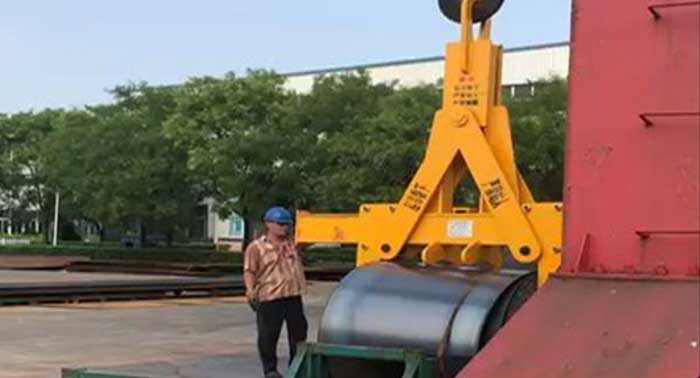
Coil tongs are specialized lifting devices that offer a secure and stable grip on steel coils. They are designed with adjustable arms that allow for flexibility in handling various coil sizes and weights. Compared to C-hook cranes, coil tongs provide better control and minimize the risk of accidents.
| Aspect | Details |
|---|---|
| Description and Functionality | Coil tongs are lifting devices that grip steel coils securely using adjustable arms that open and close around the coil's circumference. |
| Design | Features a strong, adjustable gripping mechanism controlled by hydraulic or mechanical systems for easy clamping and release. |
| Functionality | The tongs clamp down securely on the coil, offering a stable lift compared to C-hook cranes. |
| Advantages Over C-Hook Cranes | |
| Versatility | Adaptable to different coil sizes with adjustable arms. More flexible than C-hook cranes. |
| Better Grip | Provides a more secure grip, reducing the chance of coils slipping or falling during lifting. |
| Safer Handling | Reduces the risk of accidents with even load distribution and secure gripping. |
| Applications in Industries | |
| Steel Mills | Efficiently and safely moves and stores steel coils. |
| Automotive Industry | Handles rolls of steel for car manufacturing. |
| Metal Fabrication | Minimizes damage while transporting coils to different production stages. |

Magnet Lifters
Magnetic overhead cranes use magnetic fields to lift and move coils. These systems have fewer mechanical parts, making them easier to maintain compared to traditional C-hook cranes. The ability to secure coils without physical contact reduces the risk of damage, making magnet lifters a highly precise and efficient solution for coil handling.
| Aspect | Details |
|---|---|
| How Magnetic Lifting Works | Magnetic lifters use magnetic fields to lift heavy objects securely, without the need for mechanical hooks. |
| Types of Magnets | - Electromagnetic Lifters: Use electric current to generate a magnetic field that can be turned on/off. - Permanent Magnet Lifters: Use naturally magnetized materials and require no power to operate. |
| Advantages Over Traditional Methods | |
| More Secure Load Handling | Magnetic lifters ensure a firm grip on coils, reducing the risk of slipping or falling. |
| Fewer Mechanical Parts | Fewer components make them easier to maintain and less prone to wear and tear. |
| Quick Setup and Use | Simply turn the magnet on or off, eliminating the need for repositioning or adjusting hooks. |
| Suitability for Coil Handling | Ideal for precise, high-speed coil handling, especially in environments like steel mills. |
| Precision | Magnetic lifters ensure minimal coil movement, providing better control. |
| No Contact | The non-contact nature reduces the chance of damaging the coil's surface. |

Automation Crane Systems for Steel Coil Storages
Automated systems and robotic coil handling offer the most advanced solution for handling coils with minimal human intervention. These systems provide the highest level of precision, safety, and efficiency by using robotic arms or automated cranes to lift and move coils autonomously.
| Aspect | Details |
|---|---|
| Introduction to Automated Systems | Automated lifting and robotic systems eliminate the need for manual labor by using robotic arms or cranes to transport coils autonomously. |
| Automated Cranes | Programmed to lift, move, and place coils with minimal human involvement, often integrated into fully automated production lines. |
| Robotic Systems | Robots with specialized grippers or magnet lifters handle coils autonomously, offering precision, speed, and consistency. |
| Benefits of Integrating Automation | |
| Precision | Automated systems offer pinpoint accuracy in handling coils, ensuring minimal human error. |
| Reduced Labor | Automates lifting tasks, reducing the need for human operators and cutting labor costs. |
| Improved Safety | By removing human involvement in hazardous lifting tasks, safety is greatly improved. |
| Cost and Implementation Considerations | |
| High Upfront Investment | Robotic systems and automated cranes are costly to install, especially when tailored for specific tasks. |
| Training and Maintenance | Specialized training for operators is required, along with ongoing maintenance to ensure optimal performance. |
| Integration with Existing Systems | Adding automation to existing setups can be complex and costly, but it provides long-term efficiency gains. |
As the demand for faster, safer, and more efficient coil handling grows, modern alternatives such as coil tongs, magnet lifters, and automated systems provide significant improvements over traditional C-hook cranes. These technologies offer enhanced grip, speed, and safety, while being better suited for integration into modern industrial settings. While the C-hook crane remains a reliable choice for certain applications, the shift towards automation and advanced material handling solutions is reshaping the future of coil handling equipment.
Comparative Analysis: C-Hook vs. Modern Alternatives
When considering whether to stick with the traditional 15 ton C-hook crane or switch to modern alternatives like coil tongs, magnet lifters, or automated systems, it's crucial to look at several factors. These include cost-effectiveness, safety and efficiency, and flexibility and versatility. Let's break these down to help you make an informed decision.
Cost-Effectiveness
Initial Investment vs. Long-Term Operational Costs
C-Hook Cranes:
- Initial Investment: C-hook cranes are relatively affordable compared to newer technologies. They have a simple design and are often less expensive to purchase and install. For businesses with limited budgets, this makes them an attractive option.
- Long-Term Costs: While the initial cost is low, maintenance and repair costs can add up over time. Wear and tear on the lifting components (such as hooks and chains) may require frequent maintenance, especially in high-use settings. This can lead to increased operational costs in the long run.
Modern Alternatives (Coil Tongs, Magnet Lifters, and Automation):
- Initial Investment: Modern alternatives often have a higher upfront cost, particularly when it comes to automated systems or advanced magnet lifters. Robotic systems, in particular, can be expensive to install due to their complexity and customization requirements.
- Long-Term Costs: While initial costs are higher, modern alternatives tend to have lower maintenance costs. For example, magnet lifters have fewer moving parts, making them more durable and easier to maintain. Automated systems also reduce the need for manual labor, which can lower operational costs over time.
In terms of cost-effectiveness, C-hook cranes may have a lower initial cost, but the long-term expenses associated with maintenance and inefficiency could make modern alternatives more cost-effective in the long run.
Safety and Efficiency
Safety Features of Modern Alternatives Compared to C-Hook Cranes
C-Hook Cranes:
- Safety Concerns: C-hook cranes require manual intervention for coil handling, which can lead to human error. Improper coil positioning or operator fatigue can increase the risk of accidents, such as coil falls or mishandling.
- Safety Features: While simple to operate, C-hook cranes lack the built-in safety features seen in more modern systems. Additional safety measures, such as lifting straps or alarms, are often needed to mitigate risks.
Modern Alternatives (Coil Tongs, Magnet Lifters, and Automation):
- Coil Tongs: These provide a more secure grip around the coil, reducing the risk of the coil slipping during transport. The risk of accidents is lower since the coil is held more firmly, and human error is minimized.
- Magnet Lifters: Magnetic lifting eliminates the need for mechanical hooks, which means fewer moving parts that could fail. The powerful magnetic grip offers secure load handling, and in many cases, automated magnetic lifters can be programmed to ensure proper lifting positions, further improving safety.
- Automation and Robotic Systems: These systems are designed with safety in mind. With robotic arms and automated cranes, human involvement is minimized, reducing the risk of operator fatigue and accidents. Additionally, automated systems can include sensors and safety mechanisms to prevent mishaps, such as coil misplacement.
In terms of safety, modern alternatives generally offer better protection. Automation, magnet lifters, and coil tongs reduce the risk of human error and accidents, making them safer overall compared to traditional C-hook cranes.
Impact on Productivity and Cycle Time Efficiency
C-Hook Cranes:
- Cycle Time: While C-hook cranes are reliable, they tend to have slower cycle times. Operators need to manually hook and unhook the coils, which can be time-consuming, especially when handling large volumes or varying coil sizes.
- Efficiency: The reliance on human intervention can lead to inefficiencies, particularly in high-demand environments where speed is crucial. Additionally, if maintenance is required, downtime can further impact overall productivity.
Modern Alternatives (Coil Tongs, Magnet Lifters, and Automation):
- Coil Tongs: These devices can handle coils faster than C-hook cranes. With their secure grip, the process of lifting and moving coils is smoother and quicker. There's less chance of needing to adjust or reposition the coil, which saves valuable time.
- Magnet Lifters: Magnetic lifting is highly efficient, especially for fast-paced environments. The ability to securely lift and move coils without adjusting mechanical hooks allows for quick operations, reducing cycle times significantly.
- Automation and Robotic Systems: Automation is a game-changer when it comes to productivity. Robotic systems and automated cranes operate continuously, without the need for breaks or rest periods. This results in much faster cycle times and greater overall efficiency, particularly in high-volume operations.
For productivity and efficiency, modern alternatives excel. Automation and magnet lifters reduce cycle times and boost throughput, which is critical in fast-paced industries.
Flexibility and Versatility
How Each Option Handles Different Types of Coils and Material Variations
C-Hook Cranes:
- Coil Variations: C-hook cranes are generally limited to handling coils of specific sizes and weights. While they are versatile in a traditional sense, the fixed design of the hook limits their ability to adapt to different coil types, especially if there are variations in coil diameter or thickness.
- Material Handling: The C-hook works well for steel coils but may not be the best option for other materials or non-standard coil shapes. It's less adaptable to changes in material handling requirements.
Modern Alternatives (Coil Tongs, Magnet Lifters, and Automation):
- Coil Tongs: Coil tongs are highly versatile. They can adjust to different coil sizes and can grip coils more securely than C-hook cranes. Some coil tongs are even customizable, making them suitable for handling various coil types, including smaller or larger diameters.
- Magnet Lifters: Magnetic lifters are flexible and can handle various materials, not just coils. They are perfect for lifting coils with different weights and sizes, and even materials like steel plates, making them a versatile option across industries.
- Automation and Robotic Systems: Automated systems are built with versatility in mind. These systems can be reprogrammed to handle different types of coils or other materials, allowing them to adapt to changing production demands. As factory requirements evolve, automated systems can be updated or modified without significant downtime.
In terms of flexibility and versatility, modern alternatives such as coil tongs and automation systems can handle a wider range of materials and coil variations, making them more adaptable to changing factory needs.
While the traditional 15 ton C-hook crane has served the steel industry well for decades, modern alternatives like coil tongs, magnet lifters, and automation systems provide distinct advantages. These alternatives generally outperform C-hook cranes in terms of cost-effectiveness, safety, efficiency, and flexibility. While the initial investment for modern systems may be higher, the long-term benefits—such as reduced downtime, improved safety, and better productivity—make them a worthwhile investment for industries looking to improve their coil handling operations.
Comparative Analysis: C-Hook vs. Modern Alternatives
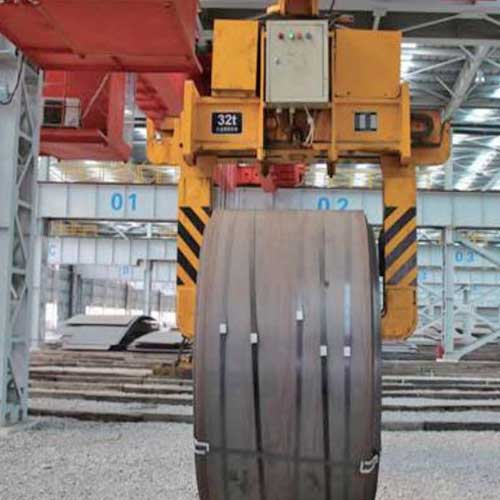
automatic crane for steel coil handling with clamp, magnetic or cutomized coil handling devices
C-Hook Cranes and Modern Alternatives (coil tongs, magnet lifters, and automation systems) across key factors:
| Factor | C-Hook Cranes | Coil Tongs | Magnet Lifters | Automation & Robotic Systems |
|---|---|---|---|---|
| Description | Traditional lifting device with a hook for coils. | Lifting device with adjustable arms for better grip. | Use magnetic fields for lifting coils. | Robotic arms or automated cranes for autonomous handling. |
| Grip/Handling | Limited grip, coil can slip or shift. | Secure and firm grip, adjustable for various sizes. | Firm grip with no mechanical hooks, reducing slippage. | Precision handling with minimal human error. |
| Flexibility | Limited to specific coil sizes and weights. | Adaptable to a wide range of coil sizes. | Ideal for various materials, offers secure, stable lift. | Can handle different coil types and integrate with other technologies. |
| Speed | Slower cycle times, manual intervention required. | Faster, more efficient lifting. | Quick setup with simple on/off mechanism. | High-speed operations with automated handling. |
| Safety | Risk of accidents due to improper coil positioning. | Safer with evenly distributed load and secure grip. | Reduced risk of slippage, fewer mechanical parts. | Improved safety with reduced manual handling. |
| Maintenance | Requires regular maintenance for wear and tear. | Easier to maintain, fewer moving parts. | Low maintenance due to fewer mechanical components. | Higher upfront costs, ongoing maintenance for robots and automation. |
| Cost | Low initial cost, higher long-term operational cost. | Moderate cost with better long-term value. | Higher initial cost but lower operational cost. | High upfront cost, long-term efficiency savings. |
| Precision | Less precise, manual adjustments needed. | More precise than C-hook cranes. | Provides minimal movement for precise coil handling. | Extremely precise handling, reduces human error. |
This table highlights the differences and advantages of each method for handling coils and other materials, helping to compare traditional C-hook cranes with modern lifting alternatives.
How to Select the Right Coil Handling Equipment Based on Your Needs
When choosing the right coil handling equipment, it's essential to consider factors like your specific workshop conditions, safety requirements, and operational goals. This guide will help you make an informed decision by focusing on the key aspects that will impact your daily operations.
Key Factors to Consider When Selecting Coil Handling Equipment
| Factor | Considerations | Why It Matters |
|---|---|---|
| Coil Size & Weight | - Flexible equipment for varying coil sizes and weights. - Adjustable or customizable features. | Ensures safe and efficient handling of coils with different dimensions, reducing the risk of accidents or damage. |
| Handling Frequency & Volume | - High-frequency environments need fast, efficient equipment. - High-volume operations require equipment that can handle large loads quickly. | Increases productivity and reduces downtime by providing equipment that keeps up with the pace of your operations. |
| Safety | - Secure gripping to prevent accidents. - Minimize manual lifting for worker safety. | Reduces the risk of injuries and accidents, improving worker safety and ensuring compliance with safety regulations. |
| Workshop Space & Layout | - Equipment should fit your space and work efficiently in tight areas. - Easy maneuverability within the workshop. | Helps avoid space congestion, ensuring smooth operations without disrupting other activities or processes in the workshop. |
| Environmental Conditions | - Consider if the equipment will be used in extreme temperatures or hazardous environments. - Equipment must be durable and safe in challenging conditions. | Ensures that the equipment operates efficiently and safely, even in harsh environments or under extreme conditions, reducing breakdowns and hazards. |
| Maintenance Requirements | - Equipment that requires less frequent maintenance. - Consider the availability of parts and ease of repairs. | Helps reduce downtime and keep operational costs low by choosing equipment with fewer breakdowns and lower maintenance costs. |
| Integration with Existing Systems | - Make sure the new equipment integrates with your current systems. - Ensure compatibility with future upgrades or automation. | Ensures that the new equipment can easily blend into your current setup, minimizing the need for additional investments or modifications. |
| Budget & Cost of Ownership | - Consider both initial cost and long-term operating expenses. - Evaluate potential cost savings on maintenance, energy, and labor. | Helps balance short-term affordability with long-term cost efficiency, making sure you get good value for your investment. |
| Customization & Future Growth | - Look for equipment that can be customized for future needs. - Ensure the equipment can grow with your business. | Future-proofs your investment by ensuring the equipment can adapt to your evolving needs and operational changes. |
Summary of Key Considerations
Selecting the right coil handling equipment boils down to understanding the unique needs of your business. By focusing on aspects like coil size, handling volume, safety, and maintenance, you can choose equipment that fits seamlessly into your operations. Here's a quick summary of the main factors to help guide your decision:
- Coil Size & Weight: Ensure flexibility to handle different sizes.
- Handling Frequency & Volume: Choose equipment that aligns with your production pace.
- Safety: Prioritize equipment that minimizes risks and ensures worker protection.
- Space & Layout: Equipment should fit well in your available workspace.
- Environmental Conditions: Choose equipment that operates reliably in your specific environment.
- Maintenance: Select equipment with low maintenance and minimal downtime.
- System Integration: Ensure compatibility with existing systems and future technologies.
- Budget: Balance initial costs with long-term operational savings.
- Future Growth: Select adaptable equipment that supports your growth.
By understanding these factors and carefully assessing your workshop's needs, you can make an informed choice that will enhance productivity, reduce risks, and support your business's long-term success.
Conclusion
While C-hook cranes have long been a reliable and cost-effective solution for coil handling, their limitations are becoming more evident in modern industrial settings. The traditional C-hook crane is still functional for straightforward, low-variability operations. However, issues such as slow cycle times, manual intervention, and safety risks have raised concerns in fast-paced or high-precision environments.
The future of coil handling is moving towards more automated, safer, and efficient solutions. Technologies like coil tongs, magnet lifters, and robotic systems are transforming how coils are lifted, moved, and placed. These modern alternatives provide faster cycle times, enhanced safety, and lower long-term costs, making them more suitable for the evolving needs of industries. Automation is expected to become a central component of material handling as factories aim for increased productivity and reduced labor costs.
Recommendations for Buyers Considering a Crane Upgrade
- Assess Your Operations: Consider the size, weight, and variability of the coils you handle. If you work with a wide range of coil sizes, coil tongs or magnet lifters might be the better choice.
- Think Long-Term: While C-hook cranes are low-cost upfront, investing in more modern solutions can offer long-term savings in efficiency, safety, and maintenance.
- Consider Automation: For high-volume or high-precision coil handling, automation or robotic systems may provide the greatest benefits, reducing labor and increasing safety.
- Evaluate Your Budget: If cost is a significant factor, weigh the initial investment against the operational savings modern equipment offers. The upfront cost of automation is high but may be offset by reduced labor and operational costs over time.
Ultimately, upgrading to more modern coil handling systems is a strategic move that will provide significant operational and safety benefits as industries continue to evolve.
Main Projects
Related Products
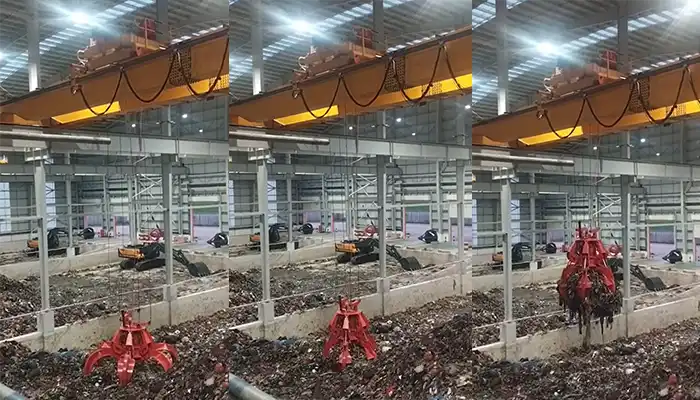
Supplied three grab bucket crane kits to Indonesia, enhancing garbage handling efficiency with high load capacity and reliable performance.
Free consultation to Confirm Parameters & Specifications and Get
Latest Crane Price & Crane Rate.
- Types of overhead cranes : _______?
- Optional: Overhead travelling crane, goliath gantry crane,Slewing jib crane, Single girder or double girder crane,small portable crane or kbk crane, etc.
- Capacity of overhead crane: _______?
- Optional: 0.25ton, 0.5 ton, 1 ton, 2 ton, 3ton, 5 ton, 10 ton,15ton, 20ton, 25 ton, 30ton,35ton, up to 550ton, etc.
- Crane span & lifting height : _______?
- Crane travelling length : _____?
- Control of overhead crane:_______?
- Optional: pendant/ remote/cabin control
- Voltage supply of overhead crane:_____?
- Eg,: 380V50/60HZ,3Phase or others,etc.
- Application/usage of crane:_______?
- Eg,: Steel mill, ,injection mold, cement,stone, concrete,granite, general manufacturing, etc.
Just leave a message via the contact form and our hoist and crane engineer will contact you with in 24working hours.
Get In Touch
